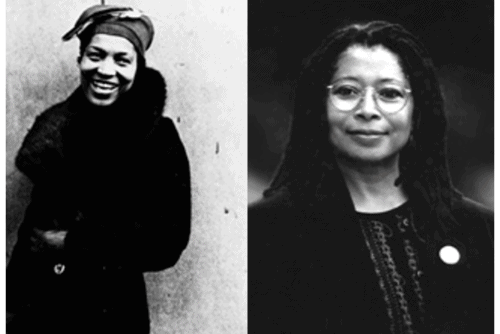She would also need all of her audaciousness as a feminist. And as a feminist woman writer in a moment in which, for many reasons and in many ways, she was out there on her own. In the context of publishers’ warnings during the ’40s and ’30s to black writers that certain subjects were just too volatile to risk with white audiences. Too risky to contend with the problem of double audiences. Here’s an example. This is literally printed as a publisher’s warning. “Nothing that casts the least reflection on contemporary moral or sexual standards will be allowed. Keep away from the erotic. Contributions must be clean and wholesome.”
And you can imagine how white racist stereotypes of the licentiousness of black women contributed to this mandate. In that context, what does Hurston do? She writes one of the single sexiest passages in the history of American literature. Right?
She was stretched on her back, beneath the pear tree, soaking in the alto chant of the visiting bees, the gold of the sun, and the panting breath of the breeze, when the inaudible voice of it all came to her. She saw a dust-bearing bee sink into the sanctum of a bloom, the thousand sister calyxes arched to meet the love embrace, and the ecstatic shiver of the tree from root to tiniest branch, creaming in every blossom and throbbing with delight.”
Keep away from the erotic—indeed! So as I say, she needed this audaciousness in the worst way. She needed it in the ’40s and ’50s when nobody would publish her work. She needed it in the ’40s and ’50s when she couldn’t sell the kind of work that she wanted to write.




